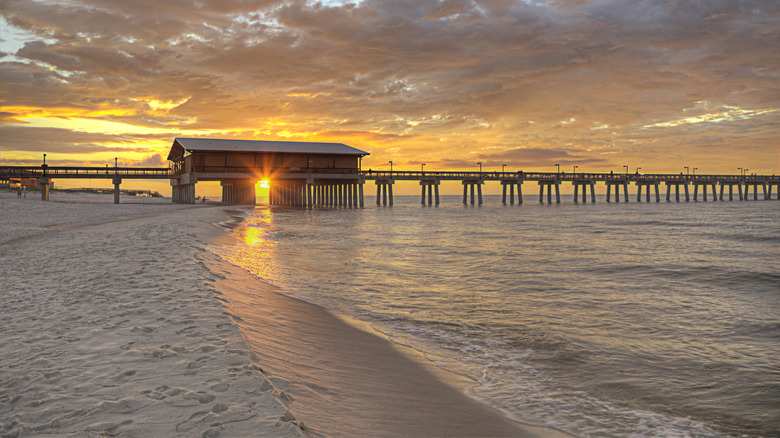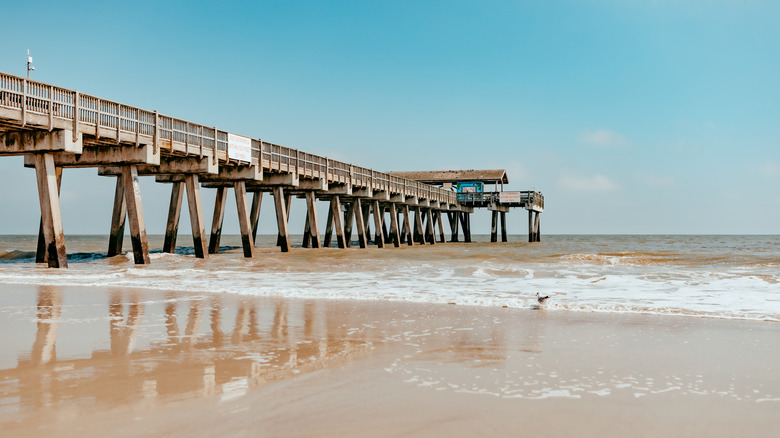The Dangerous Spot In The Ocean To Avoid Swimming Near While On A Beach Vacation
As much as a trip to the beach should be a carefree getaway, it's important to be alert to some simple safety measures to make sure you can keep relaxing without putting yourself or a little one in harm's way. You can avoid injuries from forceful waters by learning to recognize the most dangerous types of waves, for example. But there are also some parts of the beach that are best avoided altogether. While many beachgoers head near the pier, where there's plenty of shade and scenery, that can be the most dangerous spot to swim.
Piers add a beautiful backdrop to the beach, and many are renowned for this reason, like the stunning pier of California's underrated Seal Beach. However, piers and other beach structures (like groins and jetties) can be dangerous for a few reasons. The first is that, because they alter water flow, they increase the likelihood of rip currents. Specifically, the type of rips they cause are called boundary rips: strong, narrow currents formed by water moving up against these structures, like a small, powerful river. If you get stuck in these currents, you could get pulled fatally underwater or thrown against the pilings or rocks and be seriously injured. According to the National Weather Service, over two-thirds of beach fatalities are a result of rip currents.
Another reason to avoid swimming near piers and jetties is sharks. Many might not realize that fishing piers are one of the things that attract sharks while swimming. The reason is quite simply that fish gather around piers, and fish, being shark food, attract sharks. In 2015, two shark attacks occurred by the Ocean Crest Pier in Oak Island, North Carolina, CNN reported. Following the attacks, many experts warned against swimming near the pier.
How to protect yourself against rip currents near piers
While shark attacks should be considered, they're less likely than getting caught in a rip current. According to the Florida Museum of Natural History, there were four deaths from unprovoked shark attacks in 2024, while the National Oceanic and Atmospheric Administration (NOAA) reports around 100 deaths caused by rip currents yearly. The easiest way to identify rip currents on the beach is to watch for areas in the water that look different from the rest. Boundary rips commonly appear as narrow, dark gaps. But just because an area of water looks calm doesn't mean that the current isn't strong. As a rule of thumb, Red Cross recommends swimming at least 100 feet away from piers and other boundary structures.
If you get caught in a rip current, don't try to swim against the pull, according to NOAA. Instead, move parallel to the shore to break free, then at an angle back to land. Meanwhile, if you see someone stuck in a rip current, get help from people on duty, rather than trying to go in yourself. "The most important thing is call 911 and get the lifeguards rolling out," Wyatt Werneth, a spokesperson for the American Lifeguard Association, told CBS News.

